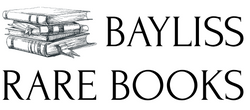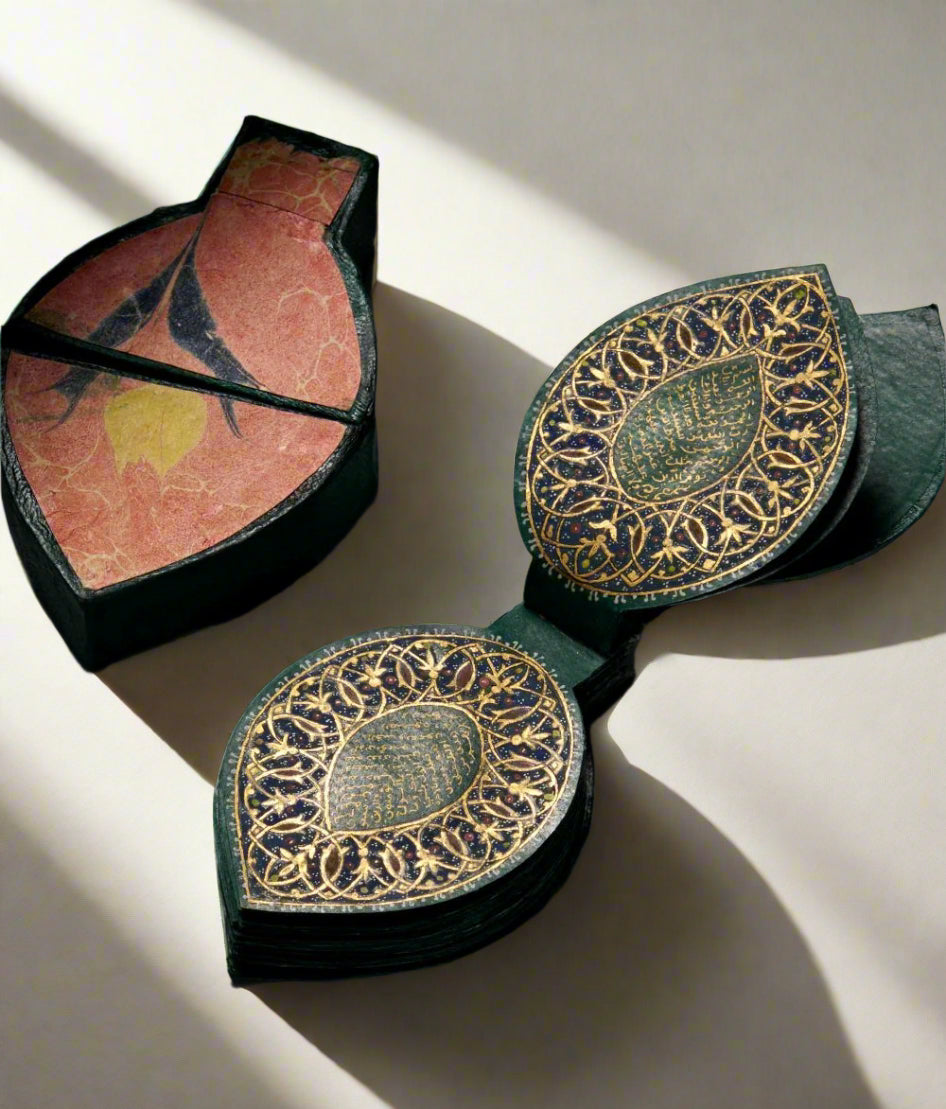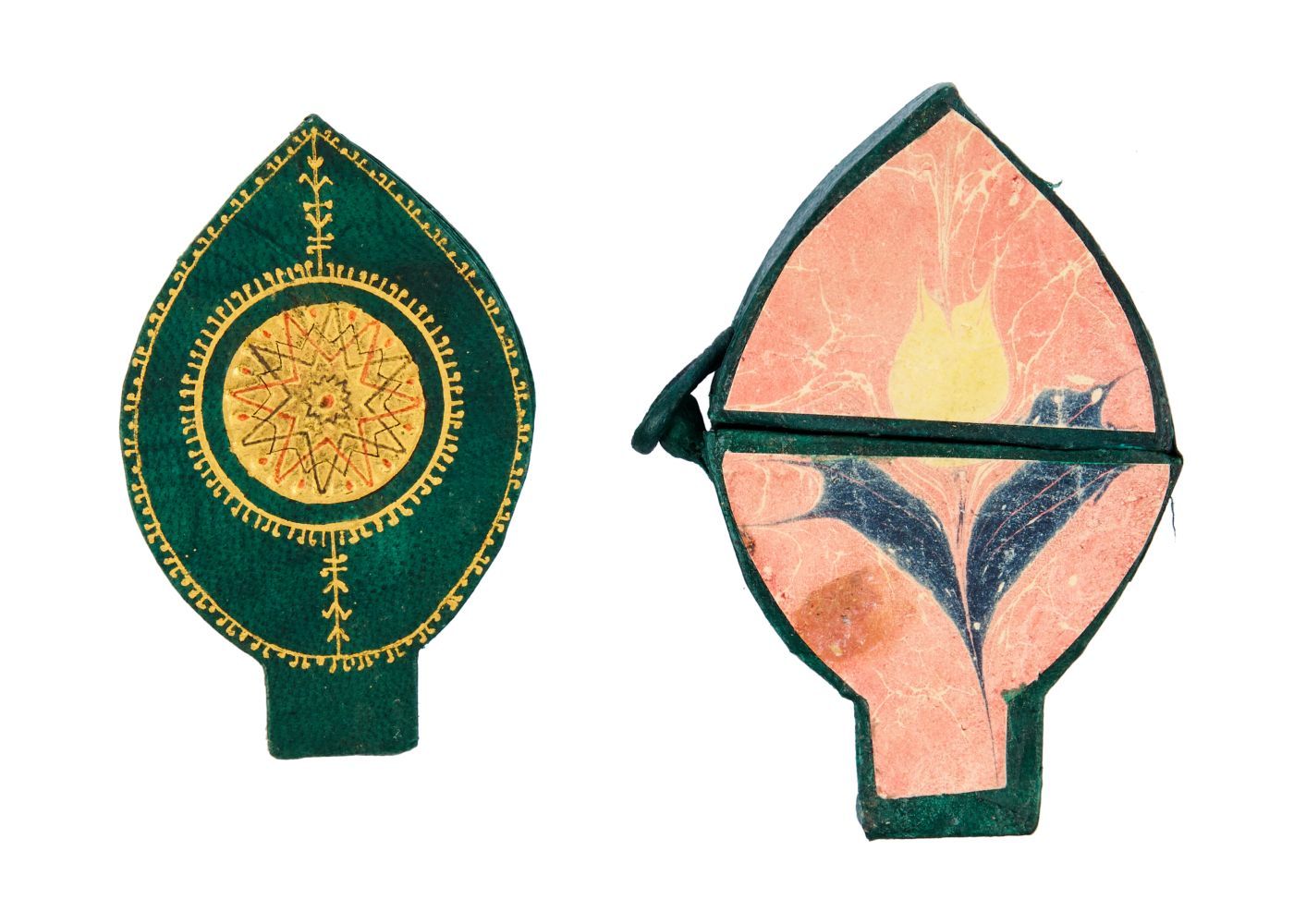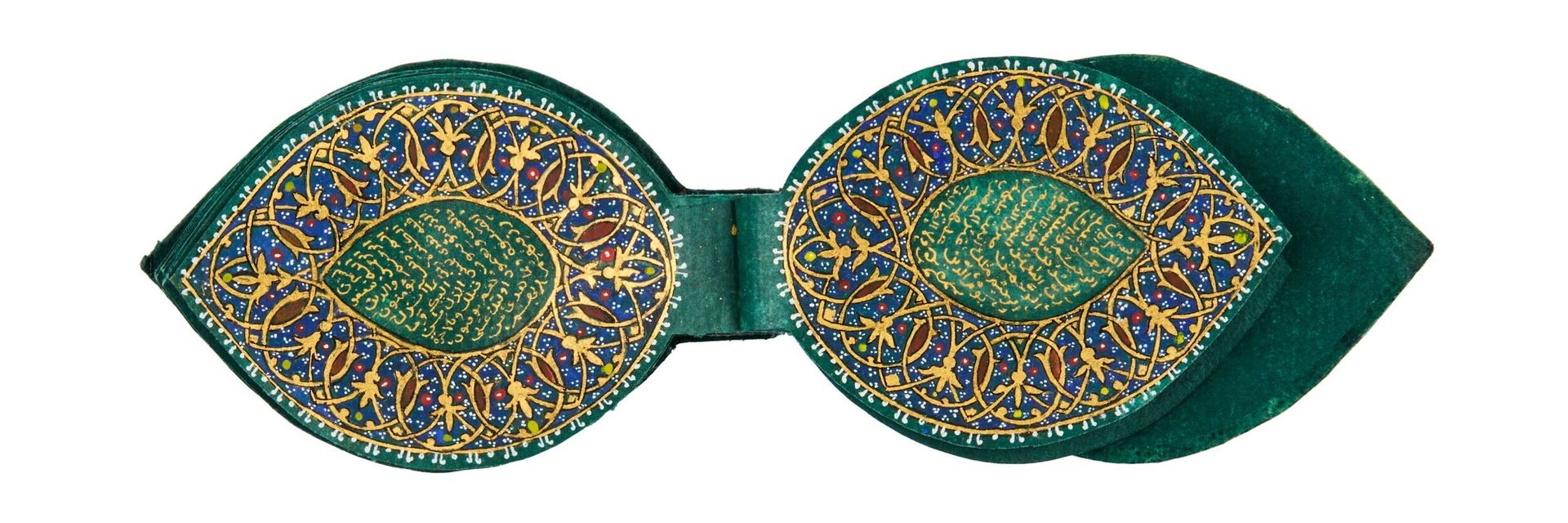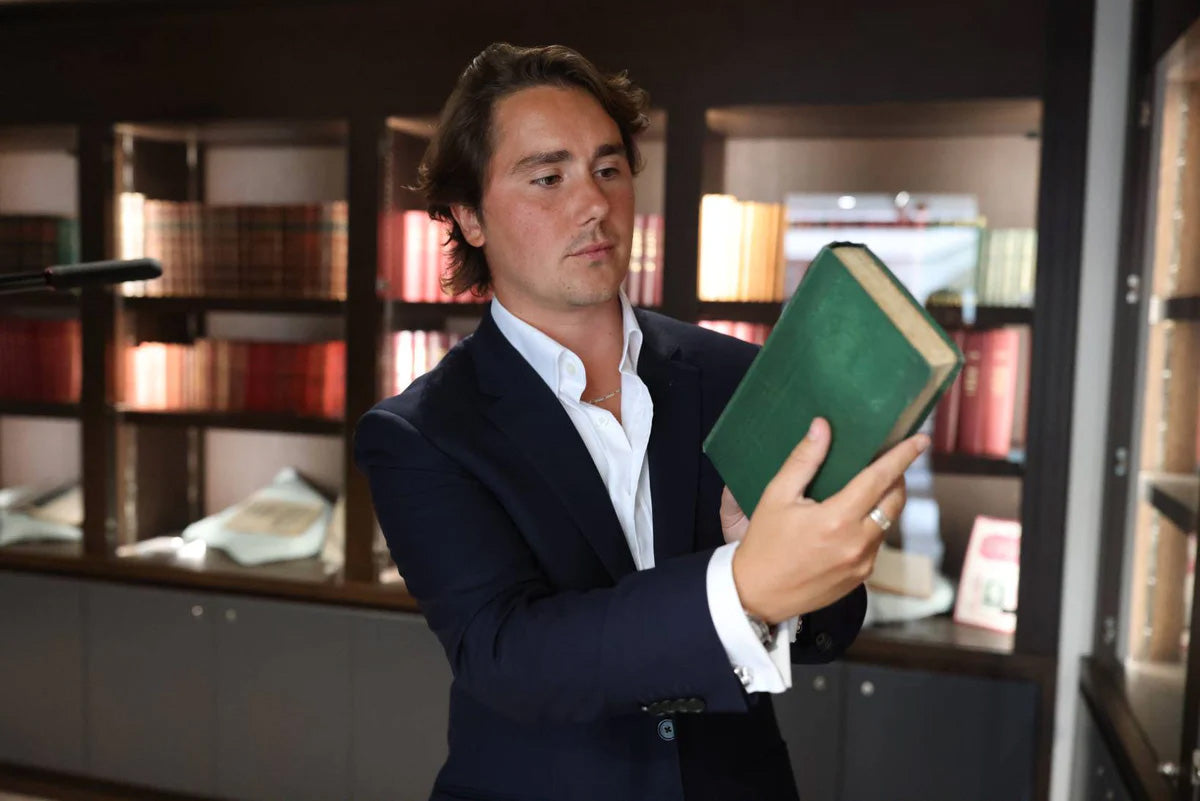Qur’an manuscript | 19th Century, Rare illuminated manuscript Qur’an in the form of a leaf – one of a kind
A remarkable and highly unusual Qur’an manuscript, this exquisite devotional object is written on green-dyed paper and bound in the stylised form of a bodhi or pipal leaf—a potent symbol of spiritual enlightenment across South Asian traditions.
It was most likely produced in the mid-1800s and shows strong Mughal influence in both the calligraphy and illumination, though I’d describe it as post-Mughal in style. It likely originated from one of the princely courts still producing fine manuscripts at the time, such as Lucknow or Hyderabad. In terms of provenance, it came from a private UK collection focused on Indian and Islamic manuscripts, and before that, it was with a dealer in Europe. The manuscript combines extraordinary artistry with profound spiritual symbolism, making it an exceptional survival of Indo-Islamic manuscript culture. An entirely unique work, it is executed in fine gold ink in delicate naskh script. The manuscript comprises multiple bifolios densely filled with lines of Qur’anic text.
Occasional rubrication and finely drawn marginal devices enhance the sacred text, while the opening bifolios are magnificently illuminated with scrolling arabesques and floral designs in gold, red, white, and lapis blue—demonstrating both the skill of the artist and the devotional care invested in its creation.
The form and materials of this manuscript are rich in spiritual resonance. The green paper—traditionally associated with paradise, renewal, and Sufi mysticism—heightens the manuscript’s devotional aura, while the leaf shape echoes the sacred bodhi tree, under which enlightenment is believed to have been attained. The result is a remarkable bridge between Indian and Islamic traditions.
Such Qur’ans were likely produced as private devotional or talismanic objects, cherished as much for their symbolic form as for their sacred content.
The manuscript is housed in decorative marbled pink covers, painted with delicate floral motifs and highlighted with medallions—completing an object of rare harmony and beauty. While miniature Qur’ans and manuscripts in unusual formats are known, examples of this calibre—combining green-dyed paper, gold script, and symbolic form—are exceedingly scarce.
Comparable manuscripts have appeared only rarely at auction: a similar leaf-shaped Qur’an on green paper sold at Sotheby’s in 2021 for £18,900; another with illuminated openings fetched £16,250 at Bonhams in 2020; and a related example with lacquer covers brought £13,750 at Christie’s in 2016. This is the finest of them all.
More than a devotional text, this Qur’an is a museum-worthy expression of Indo-Islamic artistic synthesis—uniting calligraphy, sacred geometry, and spiritual symbolism in one of the most intimate and meaningful forms a Qur’an can take.
